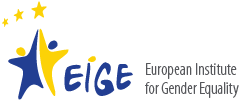The European Institute for Gender Equality commissions a major piece of research twice a year. Their job is to monitor how European Union countries and future EU countries are fulfilling the agreements they made to ensuring men and women in their countries live in equality. There are 12 themes they cover, and on their website you can find the reports, including the latest to be uploaded, on women and media.
Earlier this year the consortium formed by Atria, an Amsterdam-based knowledge center on women and equality and Karat Coalition, a Warsaw-based network of women’s organisations in Eastern and Central Europe and former CIS, completed the newest piece of research. This one was on the institutional mechanisms EU governments have in place – like laws, organisations, and forms of cooperation – to safeguard the continuing process of implementing the agreements. NETSHEILA was instrumental in winning the bid to do the research, and three of our ‘Sheila’s’ worked on the project.
One of them is Niala Maharaj, NETSHEILA’s superb writer/editor. It was her job to make sure the reports that came out of the project could be read by people with many different levels of English-language proficiency. What is it like, editing a project of this magnitude?
What she says
It was like doing a jigsaw puzzle. The 800 pages of country reports I received from the researchers had little meaning at the beginning. Tedious bits of information about exactly where and how gender equality was handled in each EU country’s bureaucracy. But, as I edited, a picture grew in front my eyes, a picture documenting the precision of the efforts to achieve gender equality throughout the European Union.
I began to admire the designers of the research. What a monumental task it must have been: setting up and monitoring researchers in 26 countries speaking different languages, having varying levels of development, and a diversity of culture! I started recognizing the value of those finicky little questions about the position of the gender equality body in the hierarchy. I wondered how all this work was made to happen despite the multitude of potential hindrances: personal and social.
My work to make the text read well began to seem simple in comparison. But it was still 800 pages, many written by non-native-speakers of English, with different grammatical flaws and infelicities in language. It required an avalanche of concentration. But, as always, it was rewarding. As a consultant editor, I acquire a deep level of knowledge on specific subjects which combine to extend my world-view and make life interesting inside my head.
Where the editor fits in
A research and knowledge sharing project like this one required more than simply creating a good research approach and implementing it. It required finding the people in each country to do the research – each of which had to fit a specific researcher profile. NETSHEILA’s vast network was instrumental in bringing the team of researchers together. Each researcher was then required to follow instructions and fill in their research templates in a specific way. The research templates became the basis on which reports could be written. The likelihood that everyone will fill in the templates following the instructions is very low, and the network approach to this project included training the researchers in filling in templates and providing them with an FAQ. It is amazing how many differences in approach to completing the templates occurs even after this training and FAQ. One researcher was responsible for analysing the resulting documents, and she could cope with language disparities. But for the end reader, it is the editor who is the link between the research and its readability.
Ready for the next job
Niala Maharaj enjoys the process – which she calls a privilege – of making the research accessible to the reader. She has done this for EIGE and for other clients in social enterprises: the human rights organizations, development groups and government agencies who draw her into their projects.
She is looking forward to the next one!
Niala Maharaj and Lin McDevitt-Pugh
Our clients



















